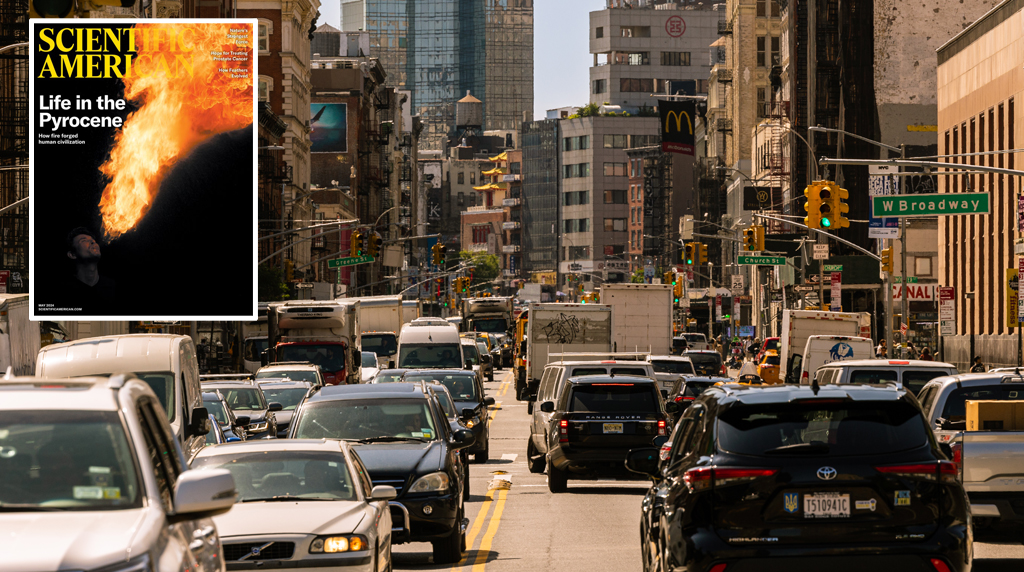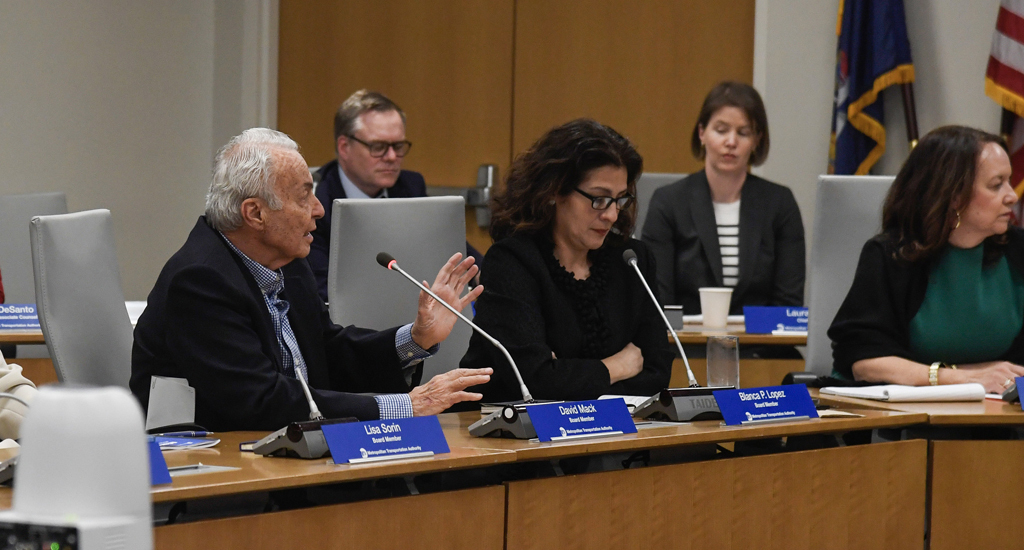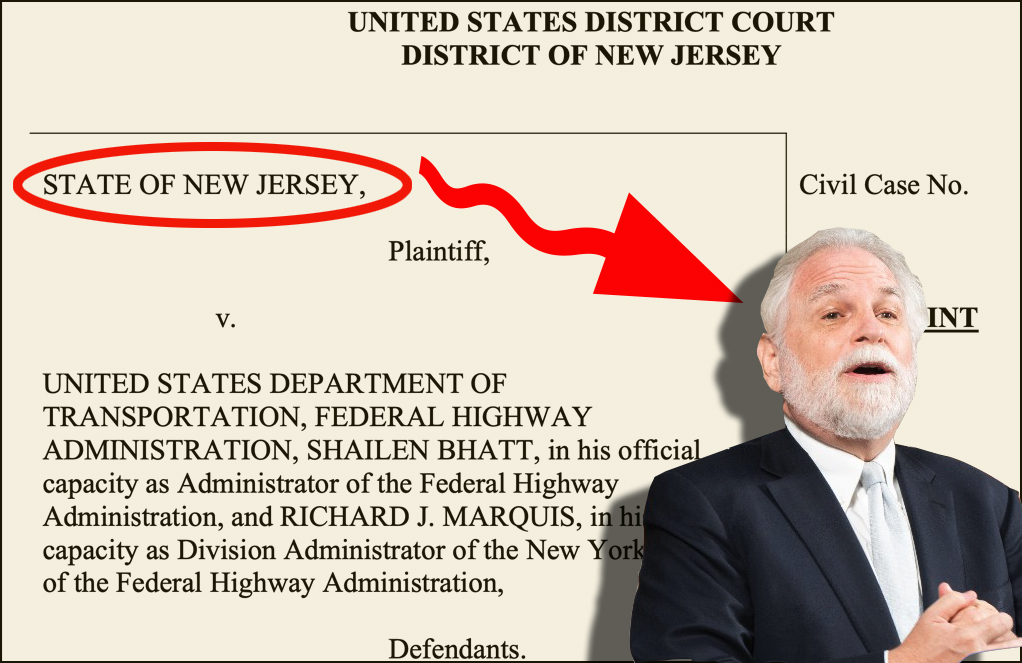The 2014 NYC Streetsies, Part 1
2:39 AM EST on December 29, 2014

Happy holidays everyone, and welcome to the first installment of the 2014 NYC Streetsies. The polls are closed, the people have voted, and now it's time to present the winners.
Before I get to that, please take a moment to support Streetsblog and Streetfilms with a tax-deductible year-end gift. I cannot emphasize the importance of reader contributions enough. Your donation makes a huge difference and will help power us forward in 2015.
On with the show...
Best Livable Streets Victory
With the passage of legislation lowering the default speed limit in New York City from 30 to 25 mph, the law now calls for motorists to drive at a pace more fitting for crowded urban streets. Though it may not seem like much, slowing down a few miles per hour gives motorists more time to react and avoid striking other people, while reducing the severity of crashes that do occur. For New Yorkers going about their business without a protective metal frame around their bodies (and for people in cars, too), this is going to save lives and prevent severe injuries.
The lower speed limit was a central plank in Mayor de Blasio's Vision Zero Action Plan. To skeptics of the proposal, changing signs to read "25" instead of "30" carried little weight on its own. Without enforcement and street designs to go along with the new law, the thinking went, behavior wouldn't change much. The thing is, the new speed limit is far from a standalone measure -- it's more like an organizing principle to continually refine and improve speed enforcement and street design in New York City.
The number of speed cams authorized by Albany increased by a factor of seven this year, from 20 to 140, giving some teeth to the new speed limit. But the automated enforcement program remains hampered by Albany's restrictions on where and when the cameras can operate, and it's still too small for NYC's 6,000-mile network of surface streets. Think of the 25 mph law as a benchmark that the speed camera program can be measured against. Are the vast majority of motorists on the city's major streets driving at or below 25 mph? If not, then the city needs to strengthen its automated speed enforcement measures.
By lowering the threshold of acceptable driving speed on city streets, the 25 mph law also strengthens the rationale for redesigning New York's treacherous arterials for greater safety. Achieving a "design speed" of 25 mph or less on all surface streets would mean major overhauls of deadly stroads like Northern Boulevard and Atlantic Avenue. In their current configuration, these wide streets send plenty of signals to disregard the 25 mph limit. The new law is an imperative to change their design.
It's extremely rare to enact a policy that affects nearly every street in the city. Even rarer to move that policy through Albany on the first try. Bills of much smaller scope often fall short in the state capitol for years before gaining traction. (Remember how long it took to pass legislation enabling bus lane enforcement cameras in New York?) The 25 mph speed limit became law in just one session, thanks to the de Blasio administration making it a priority, and to our next honorees...
Activists of the Year

In a matter of months, Families For Safe Streets became a powerful force for policies that protect people from traffic violence. Every member of the group has lost a loved one to reckless driving and dangerous streets, and they've made it their mission to spare other people from the grief they've experienced. Since forming in February, they have changed the political landscape for street safety legislation to a remarkable degree.
When they went to Albany, Families For Safe Streets won over lawmakers who needed to be persuaded to support a lower speed limit. In the City Council, their message helped pass significant new legislation to hold drivers accountable for injuring pedestrians and cyclists with the right-of-way, and to keep dangerous cab drivers from getting back behind the wheel. By speaking to elected officials and reporters about their personal loss and the moral obligation to prevent traffic violence, they're making New York City streets safer for all of us.
Best Pedestrian Safety Project

Where one wide street crosses another wide street, it's a recipe for vehicular mayhem. Throw in some extra complexity and irregular angles, plus a big helping of old-school traffic engineering, and you've got an epic fail of an intersection. That's a fair label for the old intersection of Houston Street and Sixth Avenue, where Jessica Dworkin was killed by a turning truck driver in 2012.
The DOT redesign of Houston and Sixth is a big improvement. Gone is the wide open asphalt free-for-all that let drivers make fast and sloppy turns but forced people on foot to go out of their way to cross the street. In its place is a design that slows turning drivers and compels them to make decisions before they arrive at the intersection, all while giving pedestrians short, direct paths to get from one side to the other, with safe places to stop if someone can't make it across in a single light cycle.
Best Bike Lane Project

2014 was not a banner year for new bike lanes in New York. With the delay of the Pulaski Bridge bike path until 2015, nothing in the current batch of nominees matches the impact of the 2013 winner, the First Avenue bike lane in the Upper East Side and East Harlem. The Polly Trottenberg DOT will have to raise its game to match the output of the JSK years.
Still, this year had its bright spots. The 37th Street connection to the East River Greenway may be short on lane-miles, but it's big on connectivity, creating a safe, legible link between the greenway and the on-street bike network. And the Kent Avenue South upgrade straightened out one of the more awkward bike lanes in the city while taming traffic with a much-needed road diet.
By the narrowest of margins, readers chose another upgrade as the winner in this category: the Lafayette Street protected bike lane. This part of Manhattan sorely lacks good north-south bike routes, and turning the old bike lane on Lafayette (it's one of the first buffered lanes in NYC) into a protected lane with pedestrian islands was a no-brainer. As the first protected bike lane to be installed during the de Blasio administration, it also carries immense symbolic value. This was a bike lane that quietly made a statement: No one's going to rip out the city's new generation of bike lanes, and actually, there's more of them on the way.
Best Transit Project
If Select Bus Service on 125th Street had been built out with river-to-river bus lanes, that project coulda been a contender for this award. The compromised version that rolled out this year, which doesn't have dedicated bus lanes west of Lenox Avenue, is a great step forward that still comes up short. So for the third year running we're awarding the transit project Streetsie to the expansion of Bus Time.
With the advent of Bus Time on all Queens and Brooklyn routes, real-time arrival info is now available via text message or smartphone app for every MTA bus line in the city. Just a few years ago, bus riders were grinding their teeth as the MTA announced another setback in the agency's decade-long attempt to make real-time info work. By changing course and adopting a looser approach to the problem, inviting the civic tech community to play a larger role, the MTA was able to turn things around and deliver citywide bus tracking in relatively short order. It's one of the real underreported success stories at the agency.
Best Sign That NYPD Can Change
After 12 years of banging their heads against a wall with Ray Kelly as police commissioner, street safety advocates finally made some inroads at NYPD in 2014. Progress was piecemeal, halting, and maddeningly slow, but it was real.
At the precinct level, the 78 in Prospect Heights and Park Slope showed what it looks like when cops work in partnership with the neighborhoods they police to address traffic violence, starting up monthly meetings about local street safety issues. At the city level, it was the increase in failure-to-yield tickets that showed 1 Police Plaza is capable of changing priorities to emphasize pedestrian safety.
Failure-to-yield to people with the right-of-way is a leading cause of pedestrian fatalities in New York, and in the first six months of 2014, summonses for this infraction rose 153 percent compared to the same period last year. Since enforcement is starting from a low baseline and many precincts still didn't see any gains, there's plenty of room for improvement. Now we know that NYPD can deliver if it wants to.
Most Outstanding Sneckdown

In the year of the sneckdown, when sneckdown fever gripped every city with real seasons, singling out a single specimen is kind of beside the point. These sneckdowns at Columbus Circle really pop, though, right? Maybe we don't need five lanes of traffic next to a major entrance to the city's most visited park.
Stay in touch
Sign up for our free newsletter
More from Streetsblog New York City
Deal Reached: Hochul Says ‘Sammy’s Law’ Will Pass
The bill, though imperfect, has been four years in the making.
Komanoff: A ‘Noise Tax’ Can Ground NYC Helicopters
A proposed $400 “noise tax” on “nonessential” flights is a start — and it will work.
Thursday’s Headlines: Welcome to the War on Cars, Scientific American
Our favorite story yesterday was this editorial in an unexpected place. Plus other news.
Meet the MTA Board Member and Congestion Pricing Foe Who Uses Bridges and Tunnels For Free Every Day
Mack drives over the transportation authority's bridges and tunnels thanks to a rare perk of which he is the primary beneficent.
Randy Mastro Aspires to Join Mayor’s Inner Circle of Congestion Pricing Foes
The mayor's reported pick to run the city Law Department is former deputy mayor under Rudy Giuliani and notorious foe of bike lanes and congestion pricing.




